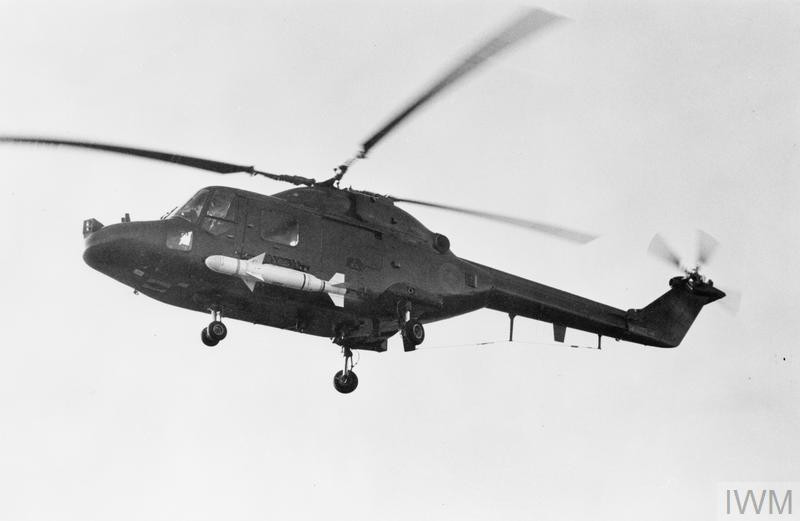Monday 3 May 1982 nearly saw another Argentine ship sunk as the British effort to retake the Falkland Islands gathered momentum.
With survivors from cruiser ARA General Belgrano still being plucked from the Atlantic more than 200 miles south of the islands, their ship having been sunk by submarine HMS Conqueror the day before, this time it was an 800-ton ocean-going tug (also described as a dispatch ship) that was in the crosshairs.
Another veteran ex-American vessel, ARA Alferez Sobral was on a search and rescue mission for the crew of a downed Argentine Canberra bomber almost 70 miles north of the Falklands in the early hours of 3 May when she was seen by a Fleet Air Arm Sea King, which was chased off by the tug’s self-defence Oerlikon gun.
The Sea King pilot alerted the British task group, and the Westland Lynx helicopters of destroyers HMS Coventry and HMS Glasgow that were sent in response.
Coventry’s Lynx fired two Sea Skua anti-ship missiles; one hit the tug’s motorboat, injuring a gun crew nearby and knocking out the ship’s communications aerials.
Around 15 minutes later Glasgow’s helicopter launched its attack; one Sea Skua badly damaged the bridge, killing eight of Alferez Sobral’s crew including her commanding officer and rendering the ship powerless and with no navigation aids.
Injured members of her crew were picked up by a civilian helicopter requisitioned by Argentine forces, and a civilian trawler took her in tow, delivering her to Puerto Deseado in Patagonia two days later.
Thousands of miles to the north, the last of the nuclear submarines to be involved in the Operation Corporate were leaving the UK – HMS Valiant departed on 3 May, and HMS Courageous left around the same time.
Type 21 frigate HMS Ambuscade also joined the campaign, sailing from Gibraltar on 3 April.
Two Avro Vulcan bombers and an accompanying force of Victor tankers took off from Ascension Island in the final hours of 3 May, setting out on another marathon bombing raid on Stanley under the codename Operation Black Buck 2.
Wideawake Airfield had already seen the first of nine RAF Harrier close air support jets arrive from RAF St Mawgan in Cornwall after a nine-hour flight that day.
These aircraft, from 1(F) Squadron normally based at RAF Wittering near Peterborough, had two distinct tasks; three were to remain at Ascension as air defence for the island, while the other six were earmarked to travel south to join the conflict on board converted merchantman SS Atlantic Conveyor.
Elsewhere in the TEZ around the Falklands, Fleet replenishment ship RFA Fort Austin rejoined the Carrier Battle Group.
Today’s image from the Imperial War Museum collection (© IWM FKD 241) shows a Westland Lynx helicopter in flight, armed with a Sea Skua anti-ship missile. For more images from the extensive IWM collection see https://www.iwm.org.uk/collections
* These posts can only give a brief sense of what was a complex and fast-moving situation 40 years ago, and cannot cover the involvement of every ship, squadron and unit in detail – for a much more comprehensive account see naval-history.net at https://www.naval-history.net/NAVAL1982FALKLANDS.htm
The Royal Naval Association is the biggest collective group of Royal Naval veterans and serving personnel, with more than 270 branches in the UK and overseas.
The RNA provides those with a link to the Royal Navy access to a life-long community of like-minded and supportive individuals.
Our community provides companionship, resilience, comradeship and unity to anyone and everyone with a Naval story, supporting them through life's highs and lows.
Membership is now free (please note, some branches may charge a small annual subscription, payable locally on their request) – see https://royal-naval-association.co.uk/join-us/ for details of how to join.
